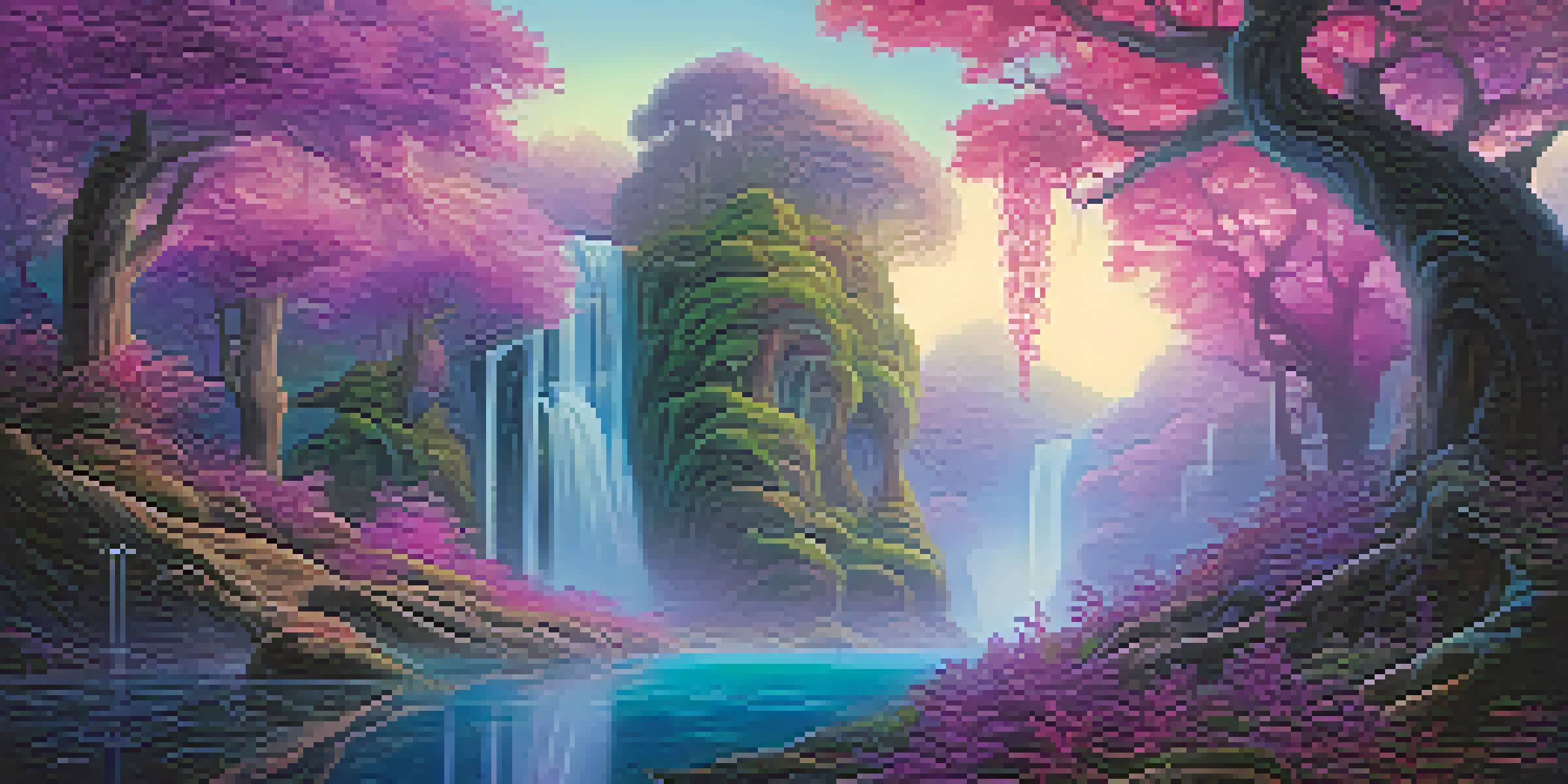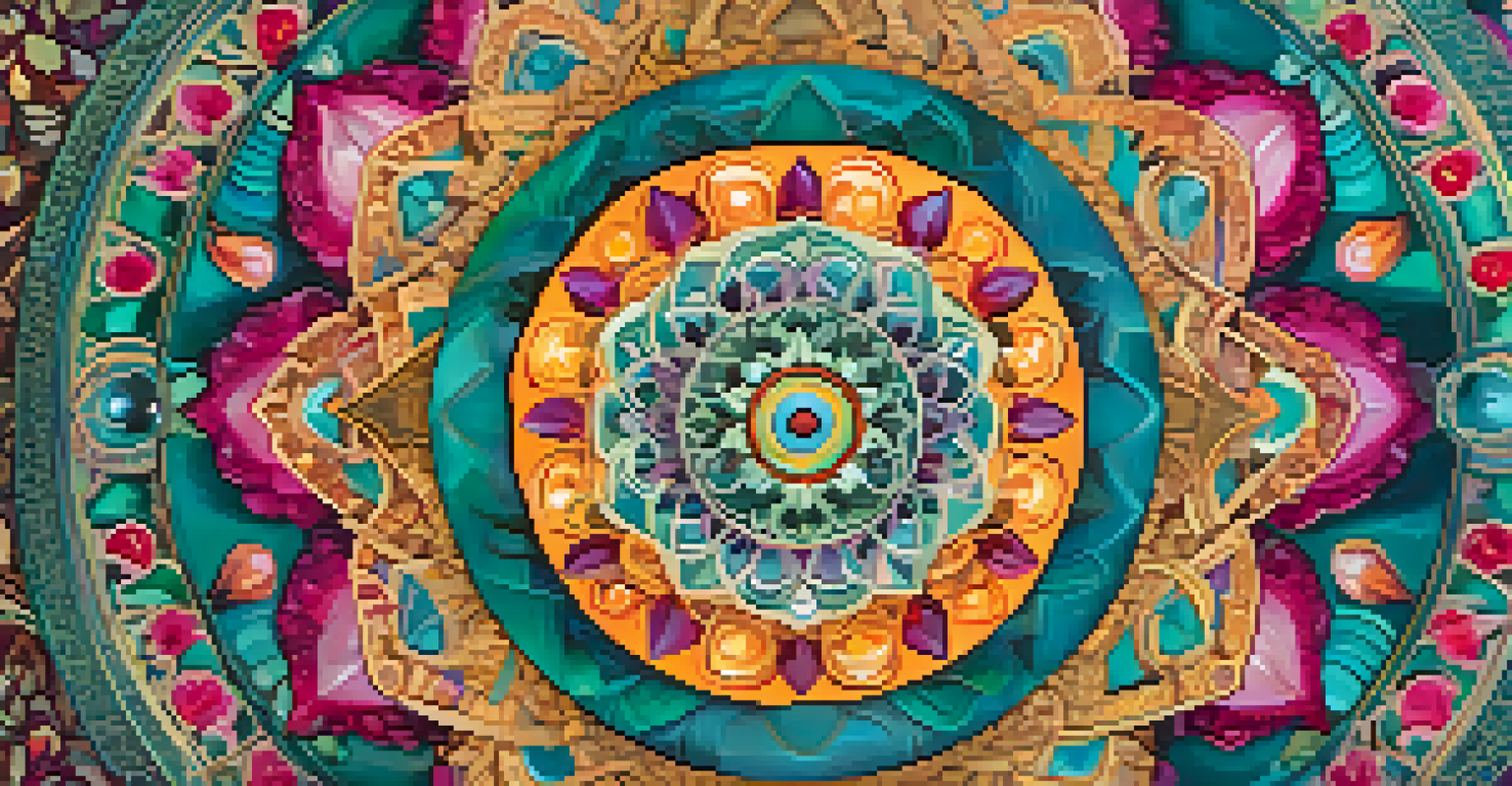The Connection Between Entheogens and Surrealism in Art

Understanding Entheogens: A Brief Overview
Entheogens are substances that are often derived from plants and fungi, used in a spiritual or religious context. They have been utilized for centuries by various cultures to provoke altered states of consciousness. This experience can lead to deep introspection, mystical insights, and profound emotional responses, making them a fascinating subject for artists looking to explore the human psyche.
I think we are all a little mad. I think we are all a little surreal.
The term 'entheogen' stems from Greek roots meaning 'generating the divine within.' These substances can unlock new ways of thinking and perception, which is crucial for artists seeking to push boundaries. For many, this journey into altered states can be transformative, leading to visions that challenge conventional understanding.
As we delve deeper into the connection between entheogens and art, it's essential to recognize their role as catalysts for creativity. By breaking down mental barriers, they allow artists to tap into the surreal, the dreamlike, and the extraordinary, ultimately shaping their artistic expression.
The Surrealist Movement: An Artistic Revolution
Surrealism emerged in the early 20th century as a response to the chaos of World War I and the rigid conventions of the art world. Artists like Salvador Dalí and André Breton sought to explore the unconscious mind through dreamlike imagery and irrational juxtapositions. This movement aimed to break free from the constraints of reason and logic, embracing spontaneity and the bizarre.

At its core, surrealism is about exploring the depths of human experience, often delving into the strange and the fantastical. Artists employed various techniques, including automatic drawing and collage, to reveal the subconscious. The surrealist manifesto heralded a new era of creativity, where the imagination could roam freely without the confines of reality.
Entheogens Unlock Creativity
Entheogens facilitate altered states of consciousness, allowing artists to explore new dimensions of thought and creativity.
The allure of surrealism lies in its ability to evoke emotions and provoke thought, inviting viewers to question their perceptions of reality. This makes it a natural partner for the exploration of entheogenic experiences, where the boundaries of the mind are similarly expanded.
Dali, Huxley, and the Surrealist Connection
Salvador Dalí, one of the most iconic surrealists, was deeply influenced by the exploration of consciousness, including the use of entheogens. His works often reflect dreamlike states and bizarre imagery, inviting viewers to interpret the deeper meanings behind them. Dalí's fascination with the subconscious aligns closely with the experiences induced by entheogenic substances.
There are things known and there are things unknown, and in between are the doors of perception.
Aldous Huxley, the influential writer and philosopher, also explored the connections between psychedelics and creativity. In his book 'The Doors of Perception', Huxley describes his experiences with mescaline, drawing parallels between these altered states and artistic inspiration. Both Huxley and Dalí shared an understanding of how these experiences could unlock new dimensions of thought and perception.
Through their works and writings, both figures have contributed to a broader conversation about the intersections of art, consciousness, and the human experience. Their explorations suggest that the surrealist movement was not just a stylistic choice but a profound inquiry into the nature of reality itself.
Visualizing the Psychedelic Experience in Art
Artists inspired by entheogens often depict the surreal and the hallucinatory, reflecting the vivid landscapes and intricate patterns that emerge during these experiences. This visualization of altered states can be seen in the works of artists like Alex Grey, who creates intricate, multi-layered images that resonate with themes of spirituality and consciousness. His artwork is a testament to the power of the mind to transcend ordinary perception.
The use of vibrant colors and distorted forms in these artworks serves to evoke the feelings associated with entheogenic experiences. These visual elements can transport viewers to other realms, challenging them to confront their own perceptions of reality. This connection emphasizes how entheogens can serve as a bridge between the tangible world and the extraordinary.
Surrealism Explores Inner Worlds
Surrealism delves into the unconscious mind, paralleling the introspective journeys experienced through entheogenic substances.
Ultimately, the psychedelic experience captured in art invites a sense of wonder and curiosity, encouraging viewers to explore their own consciousness. By transcending the mundane, these artists create a dialogue about the nature of reality, perception, and the human experience.
Surrealism as a Reflection of Inner Worlds
Surrealism's focus on the unconscious mind allows for a rich exploration of inner worlds, often mirroring the introspection facilitated by entheogenic experiences. Artists like René Magritte and Max Ernst used dream logic and unexpected combinations to reflect the complexities of human thought and emotion. Their works often invite viewers to consider the layers of their own subconscious.
This exploration of inner worlds can be likened to a journey through one's psyche, much like the experience of using an entheogen. Both paths can lead to revelations about oneself and one's place in the universe. The surrealist approach encourages an exploration of these depths, making the invisible visible.
As we engage with surrealist art, we are prompted to confront our own thoughts and feelings, often finding connections to the experiences induced by entheogens. This dynamic interplay enriches our understanding of both the art and the human condition.
The Role of Nature in Surrealist Art and Entheogens
Nature plays a significant role in both surrealism and the use of entheogens, often serving as a source of inspiration and connection. Many entheogenic substances are derived from plants and fungi, which have been revered in various cultures for their spiritual properties. This connection to nature is also reflected in surrealist art, where organic forms and landscapes often take on exaggerated or fantastical qualities.
Surrealists frequently incorporated elements of nature into their works, using them to symbolize deeper psychological truths. For instance, Dalí's melting clocks and dreamlike landscapes often evoke a sense of time and reality that feels simultaneously familiar and alien. This blurring of boundaries reflects the transformative power of both art and entheogens.
Nature's Role in Art and Psyche
Both surrealist art and entheogenic experiences are deeply connected to nature, emphasizing the interconnectedness of all things.
By intertwining natural elements with surrealist themes, artists create a dialogue about the interconnectedness of all things. This relationship not only enhances the depth of their work but also mirrors the profound insights gained through entheogenic experiences.
Conclusion: A Shared Journey of Exploration
The connection between entheogens and surrealism is a rich tapestry woven from threads of creativity, consciousness, and the human experience. Both realms invite exploration beyond the ordinary, encouraging a deeper understanding of ourselves and the world around us. Artists and users alike embark on journeys that challenge perceptions and reveal hidden truths.
As we reflect on the impact of entheogens on surrealism, we can appreciate how they serve as tools for expansion—of thought, emotion, and imagination. This shared journey of exploration ultimately enriches our understanding of art and the complexities of the human psyche.

In embracing the surreal and the psychedelic, we open ourselves to new possibilities, allowing the boundaries of creativity and consciousness to blur. This connection invites us to continue exploring the depths of our own experiences, both in art and in life.